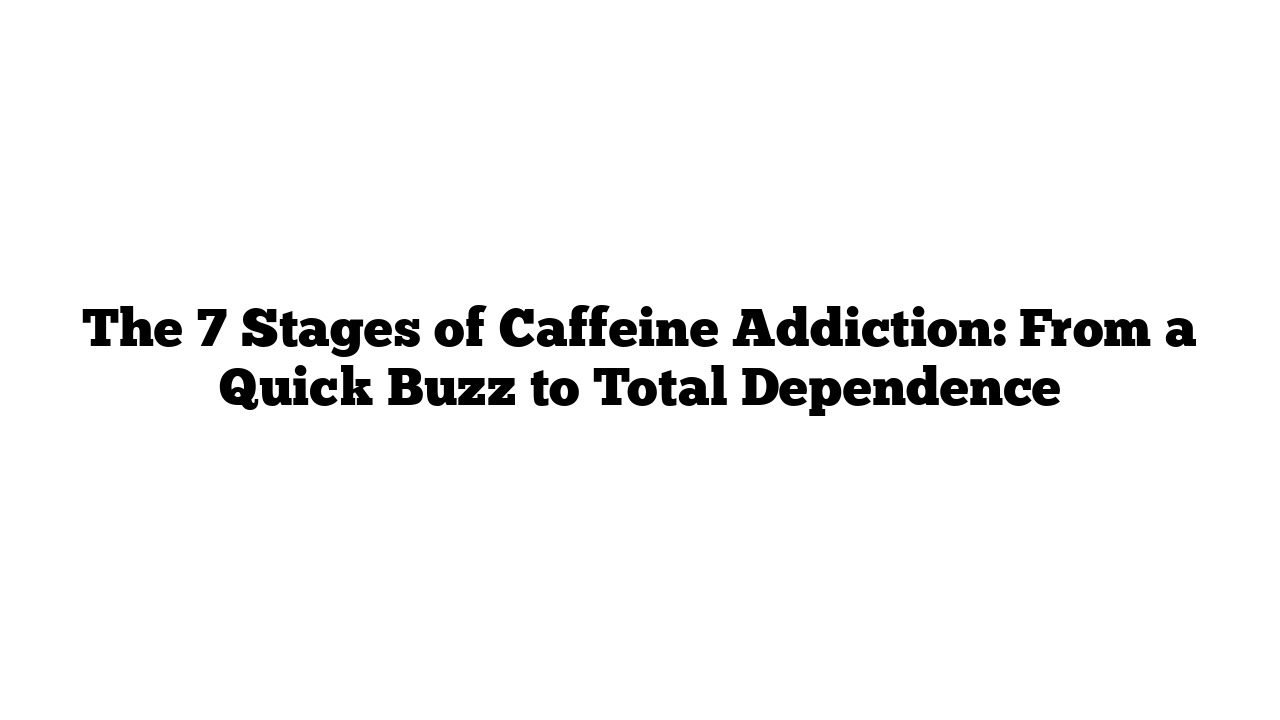Caffeine, the world’s most popular stimulant, can start off as a helpful pick-me-up but can quickly turn into a powerful addiction. Let’s break down the seven levels of caffeine addiction – from that first innocent sip to complete dependency – and explore how each stage brings a new intensity.
1. Stage 1: The Casual Caffeine Newbie – 30-40 mg
This level is where most people begin, with occasional, low-dose caffeine from tea or soda. At this stage, caffeine doesn’t feel like a necessity but simply a treat.
- Who’s Here? Think of it as the “casual zone” – maybe a yoga-loving mom or an 11-year-old who drinks soda to stay up a bit later at a sleepover.
- Caffeine Source: Teas, soft drinks, or low-caffeine sodas.
2. Stage 2: The Morning Joe – Around 90 mg
At this level, coffee becomes your new friend. One cup offers just enough caffeine to give you a nice boost without going overboard.
- Why You Drink It: For those who need an extra push to get through their day, a cup of coffee can feel like an energizing start.
- Daily Use: Usually for mornings or when a little focus boost is needed.
3. Stage 3: Daily Dose Dependency – 90 mg Every Day
When coffee becomes a daily necessity, things start to shift. Now, a bit of dependency is creeping in. This stage may still feel energizing, but you start to crave caffeine every single day.
- Signs of Dependence: You’re drinking coffee even if you’re not tired, and it’s becoming a fixed part of your routine.
- Next Stop: Starting to feel those cravings when you don’t have it.
4. Stage 4: The Double Shot Dabbler – 180 mg
Two cups of coffee or an energy drink like Prime or Celsius daily – that’s when caffeine use steps up. Here, you’re no longer just looking for a morning boost; it’s about keeping the energy going all day.
- Life Changes: This stage often kicks in when someone’s going through stress – breakups, intense schoolwork, or tough jobs.
- Warning: Caffeine dependence can start feeling isolating. You might feel the need to “fuel up” just to get through.
“When you find yourself needing two cups just to get started, it’s a sign that caffeine dependency may be brewing,” say experts.
5. Stage 5: Energy Drink Enthusiast – 200+ mg
By now, energy drinks like Monster or Rain become part of the daily lineup. Making coffee every morning feels like too much work, and energy drinks are the go-to.
- Side Effects: This stage can bring more than just energy – it can lead to jitters, anxiety, and sleeplessness.
- Caffeine Dependence: You start to feel a lack of energy without caffeine, and the “high” you get isn’t as strong.
6. Stage 6: The Limit Pusher – 300 mg
Reaching the recommended daily caffeine limit (300 mg) is a turning point. Powders and pre-workout mixes come into play as you need more caffeine for the same effect.
- Risks Involved: At this level, you’re pushing your heart to the limit. The body’s tolerance is so high that caffeine stops providing that initial energy rush.
- Living with Dependence: Dependency becomes a lifestyle. Caffeine feels essential just to feel “normal.”
7. Stage 7: Total Dependence – Beyond 300 mg
Welcome to the peak of caffeine addiction. Pre-workout powders and highly caffeinated drinks are now daily requirements. Yet, despite all this caffeine, you no longer feel the rush – it just feels like a way to get by.
- The Void: Taking all this caffeine might feel like a solution to stress, but it often hides deeper issues. The cycle of dependency becomes a lifestyle that’s hard to break.
- Getting Out: Breaking a caffeine addiction can feel tough, but slowly tapering off and finding other ways to cope with stress are healthier options.
“At some point, taking all this caffeine only makes you feel ‘normal’ again,” says addiction specialists.
Finding Balance
If you recognize yourself in these stages, consider ways to reduce your caffeine intake or replace it with healthier habits. Small steps – like decreasing your caffeine by one cup a day – can make a huge difference.
For more on breaking caffeine addiction and its impact on mental health, visit medicaltimes.io for more tips.
